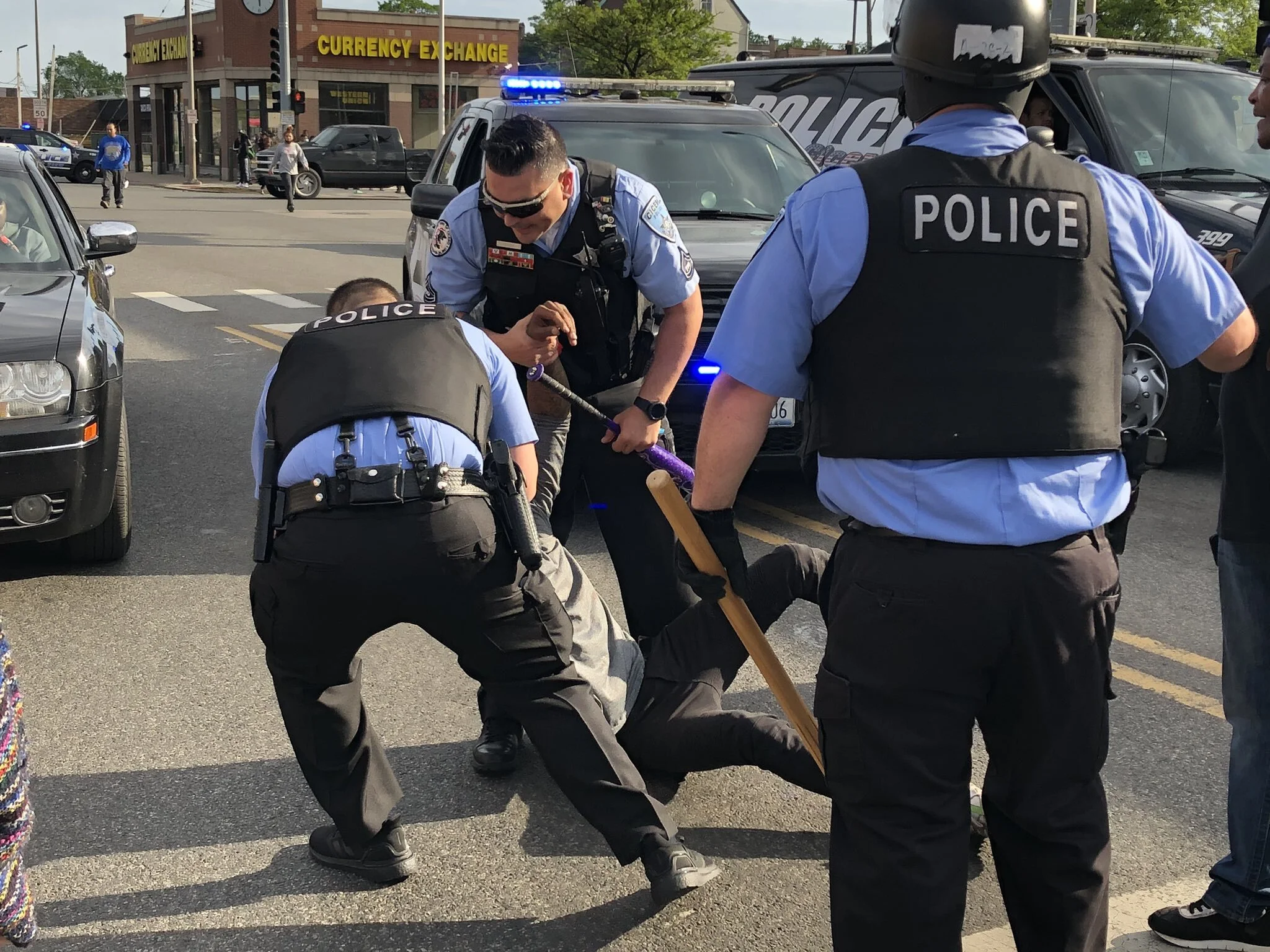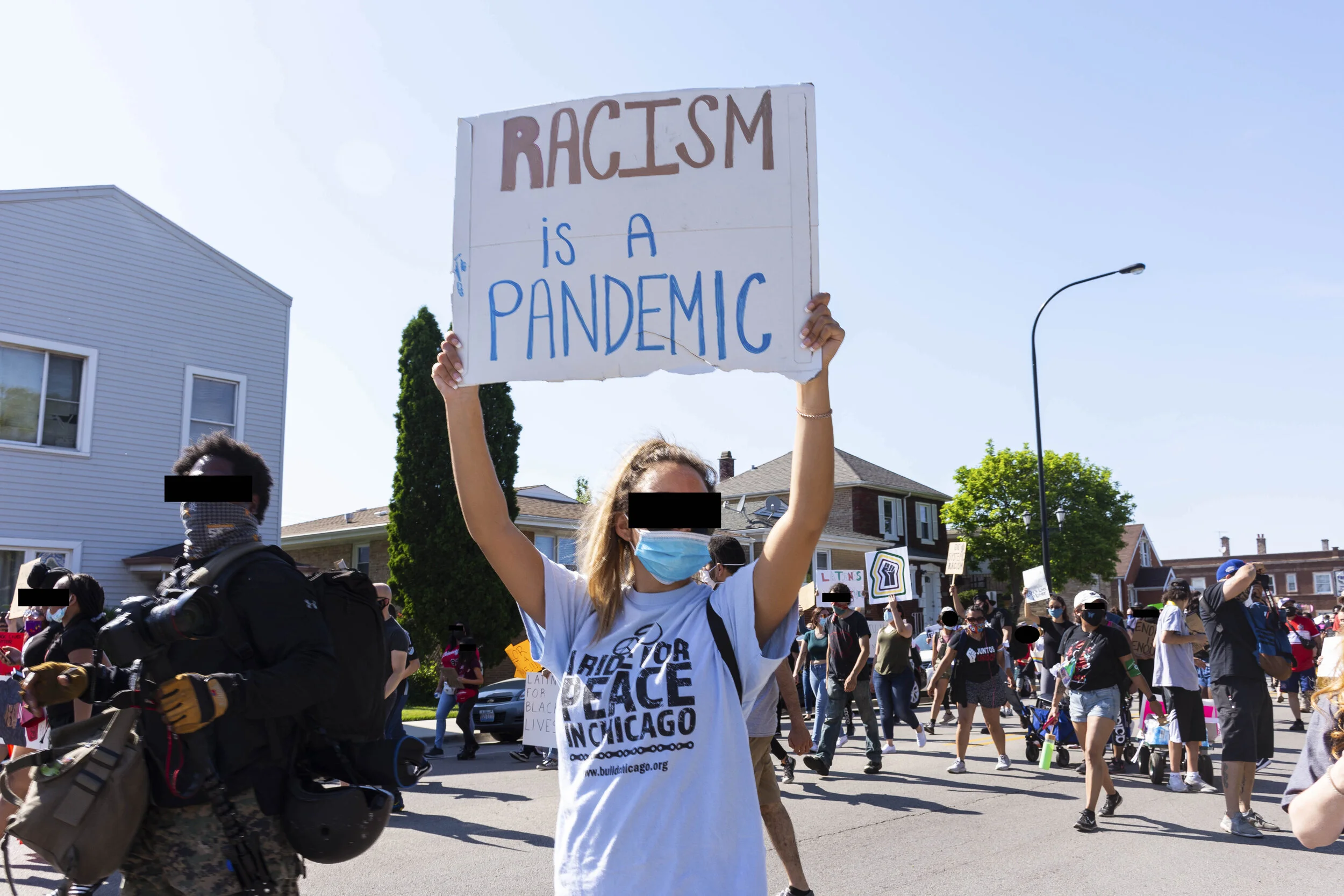Opinion: We Don’t Have to Repeat Cicero’s Racist History
Various newspaper clippings.
By Rodrigo Anzures-Oyorzabal
On June 1, 2020 many Cicero residents began patrolling Cicero streets claiming they were protecting businesses from being broken into.
I have friends that live in La Villita that said the days before June 1, some of the people claiming to protect businesses in La Villita engaged in racist attacks against Black people that were simply in the area at the time. Knowing this, I went out on June 1 to see if the same was happening in Cicero. It was.
I saw groups of non-Black men walking around with bricks, bats, sticks, and other weapons, harassing or attacking Black people in the area. I didn’t see them attack a single non-Black Latinx person even though I also saw non-Black Latinx people breaking into stores.
Unfortunately, racial tensions are not new to Cicero. What happened in Cicero on June 1 was just the latest in a decades long history of anti-Black violence in our town.
In the summer of 1951, Harvey Clark Jr., a Black man who worked as a bus driver in Chicago, rented an apartment in Cicero. At the time Cicero was a predominantly white community and was known as a “sundown town”—a place where Black people would be harassed or assaulted after sundown.
When Clark Jr., his wife, and their young children first tried to move to Cicero on June 8, 1951, Cicero police harassed the Clark family and threatened to arrest them. The Clark family later sued the Cicero Police Department. A court ordered the police to let the Clarks move into Cicero and protect them from anyone trying to force them out, as documented in Richard Rothstein’s book, “The Color of Law.”
After getting the court order, the Clark family moved in on July 11, 1951. White Cicero residents formed a mob that same day that eventually grew to as many as 4,000 people. They threw the Clarks’ possessions and appliances out of a third story window, set the Clarks’ belongings on fire and tried to burn the building down. According to the Images of America book, “Cicero Revisited,” a woman at the scene told a reporter, “They’re doing exactly right. They’re only protecting our homes.”
Cicero police didn’t arrest anyone that night and the National Guard was called to contain the riot, which lasted three days. By the end of the riots, 118 people were arrested, but a Cook County grand jury did not indict any of them.
At one of the court hearings, residents wore medallions with the words “Keep Cicero White.” The grand jury instead indicted Clark, his real estate agent, the white landlady who rented to him, and his attorney for inciting a riot and trying to lower property values, according to Rothstein’s book.
Fifteen years later, in 1966, Martin Luther King Jr. and his family moved to an apartment in North Lawndale and planned a march into Cicero. King eventually cancelled the march.
That same year, however, Jerome Huey, a 17-year-old boy living in Chicago came to Cicero for a job interview. He never made it home because a mob of white teenagers beat him to death with a baseball bat.
Some civil rights activists, still angry about Huey’s murder, planned a different march into Cicero for September 4, 1966.
The Chicago Tribune reported on the march. With Huey’s parents at the front, Black and white residents marched from North Lawndale to Cicero. 3000 police officers and members of the National Guard had to protect 250 protestors from white mobs. The mobs followed the march and at the intersection of Cermak Road and Cicero Avenue started attacking the protestors. Mobs followed the protestors for the rest of the march, throwing rocks, bottles, and firecrackers at them.
The next year, in 1967, Dr. King again spoke publicly about marching in Cicero. The newspaper Berwyn Life reported on some of the local Republican responses. The Cook County Sheriff, Joseph Woods, told a Republican crowd in Berwyn that he didn’t plan to call the National Guard but could “call out a posse if necessary.” He said he could deputize the 1000 Republicans in the crowd and that the only way to “control a mob” was through fear. “If they shoot, we’ll shoot back,” he said.
Newspapers at the time, like the Stickney and Forest View and the Chicago Tribune, reported that Town officials encouraged Cicero residents to stay home during the planned marches.
The Times would later call Cicero “the most hostile all-white community in the Chicago area.” At a press conference Stickney Life and Forest View attended, Dr. King called Cicero “the Selma of the North,” comparing Cicero to the southern city where police and white mobs killed several civil rights activists.
Two decades later in 1987, the Town of Cicero was in the middle of complying with a consent decree with the U.S. Department of Justice when another racially motivated attack happened. The consent decree came after the Justice Department sued the Town for discriminating against Black people seeking housing in Cicero and jobs with the Town of Cicero. According to Cicero resident Norman Blei’s book, “Neighborhood”, that same year a Black family tried to move in. People threw gas filled bottles and gunshots at their home. Cicero’s council president later bragged that “the area is well-secured.”
It’s 2020 and sadly these events are still happening.
I’ve talked with a lot of people about what happened on June 1. Some think what happened that day is different from the race riots in the past. They say we’re not white, and the other riots happened in the “old Cicero.”
But what happened on June 1 was a modern version of the other riots. People used the same weapons, bricks, bats, and bottles, and the victims of the attacks were mostly Black. The violence of June 1 escalated on Cicero and Cermak, just like it had during the march of 1966.
Cicero police, past and present, didn’t do enough to stop the attacks. I saw police officers ride past men and boys who had weapons and saw a police officer salute a boy holding a metal pole instead of telling him to stay inside.
The Town has repeatedly said the violence on June 1 was caused by “outside agitators,” similar to how the Town said “outsiders” would cause trouble in 1966. I saw a police officer yell at two young Black women to “go back to Chicago” until the women told him that they live in Cicero. The Town is sending a message that Black people don’t belong here, just like they told Black families in previous decades that they didn’t belong in Cicero.
Despite all of this, I think Cicero can move forward in a different direction.
The days after the attacks, I attended three different marches in Cicero in support of Black lives. Many outreach workers collaborated with Black and Brown residents in Chicago and Cicero to negotiate truces and promote peace in our area. Some non-Black Latinx residents are talking to our families about what happened and trying to educate them on Cicero’s racist history. As Cicero residents, we need to keep doing this and we need to publicly acknowledge Cicero’s racist past and present. We need memorials where the past riots occurred, honoring the bravery of the Clark family, the courage of the Civil Rights marchers and the tragedy of Huey’s murder. We need to hold the Town accountable for ignoring the needs and safety of Black residents. If we want a healthier, safer Cicero, we need to protect our Black neighbors.
Rodrigo Anzures-Oyorzabal is a Cicero resident and a student at Northwestern Pritzker School of Law.
Full disclosure: Anzures-Oyorzabal is related to a Cicero Independiente co-founder.










